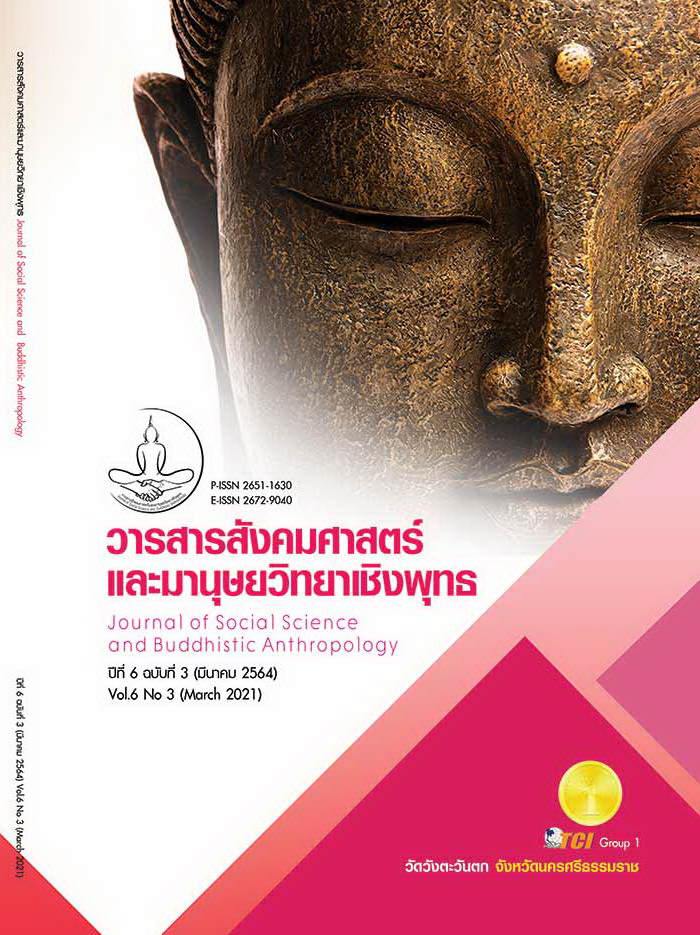Guideline for Thailand Gems and Jewelry Industry Management to Modern Production Technology Management
Keywords:
Structure Equation Modeling, Gem and Jewelry Industry, Modern Production TechnologyAbstract
This research aims to (1) investigate important levels guideline for Thailand gems and jewelry Industry management to modern production technology management, and (2) to develop the structural equation model of the guideline for Thailand gems and jewelry Industry management to modern production technology management. This study employed both quantitative and qualitative research methods. The samples for qualitative research were 9 experts who came from top management in government sector, private sector and academic. The samples for quantitative research were 500 entrepreneurs in the gems and jewelry industry which got standard or award.
The results revealed that the important level of the guideline for Thailand gems and jewelry industry management to modern production technology management was at high in overall. When considering in each dimension, including Product Design and Development, Machines and Equipment Automation Management, Quality Control and Continuous Improvement, and Production Planning and Control, the important level was at high in every dimension
The analysis of the structural equation model had value over the minimum criteria and consistent with the empirical data. It can conclude that (1) machines and equipment automation management directly influence on product design and development, quality control and continuous improvement and production planning and control at statistically significant levels of 0.001, (2) product design and development directly influence on quality control and continuous improvement and production planning and control at statistically significant levels of 0.001, and (3) production planning and control directly influence on quality control and continuous improvement at statistically significant levels of 0.05.
References
กระทรวงอุตสาหกรรม. (2559). แผนแม่บทการพัฒนาอุตสาหกรรมไทย พ.ศ. 2555-2574. เรียกใช้เมื่อ 9 กรกฎาคม 2561 จาก https://dsp.dip.go.th/th/category/2017-11-28-06-56-01/2017-12-07- 02-27-01
กรมการค้าระหว่างประเทศ. (2562). ข้อมูลสถานการณ์ส่งออกสินค้าอัญมณีและเครื่องประดับ 2562. เรียกใช้เมื่อ 6 เมษายน 2560 จาก https://ditp.go.th/ditp_web61/article_sub_view.php? filename=contents_attach/542727/542727.pdf&title=542727&cate=791&d=0
จิตลดา หมายมั่น และ สมบัติ ทีฑทรัพย์. (2559). Industry 4.0 อนาคตของอุตสาหกรรมไทย. เรียกใช้เมื่อ 9 ธันวาคม 2562 จาก https://he01.tci-thaijo.org/index.php/EAUHJSci/article/view/48844/45629
ธานินทร์ ศิลป์จารุ. (2563). การวิจัยและวิเคราะห์ข้อมูลทางสถิติด้วย SPSS และ AMOS. (พิมพ์ครั้งที่ 18)นนทบุรี : เอส.อาร์.พริ้นติ้ง แมสโปรดักส์.
ธนาคารเพื่อการส่งออกและนำเข้าแห่งประเทศไทย. (2563). มองแนวโน้มการค้าอัญมณีและเครื่องประดับ
ผ่านทิศทางเศรษฐกิจปี 2563. เรียกใช้เมื่อ 1 มกราคม 2563 จากhttp://www.thaigemjewelry.or.th/user_file/p1e1qsr6ed1m5u1av15sng7lgtg4.pdf
พิมพ์ธัญญา ฆ้องเสนาะ. (2560). การปรับโครงสร้างเศรษฐกิจไทยเข้าสู่ “ประเทศไทย 4.0”. เรียกใช้เมื่อ 9 ธันวาคม 2561 จาก https://library2.parliament.go.th/ebook/content-issue/2560/hi2560- 035.pdf
สภานิติบัญญัติแห่งชาติ. (2561). คำแถลงประกอบงบประมาณรายจ่ายประจำปีงบประมาณ พ.ศ.2561. เรียกใช้เมื่อ 18 กรกฎาคม 2562 จาก https://media.thaigov.go.th/uploads/document/ 70/2017/06/doc/budget.doc
สำนักงานพัฒนาวิทยาศาสตร์และเทคโนโลยีแห่งชาติ. (2563). ผลการจัดอันดับความสามารถในการแข่งขัน ประจำปี 2562 โดย IMD (2019 IMD World Competitiveness Ranking). เรียกใช้เมื่อ 9 ธันวาคม 2562 จาก https://www.nstda.or.th/th/nstda-knowledge/12907-imd-competitiveness-ranking.
สุวิทย์ เมษินทรีย์. (2559). ประเทศไทย 4.0. เรียกใช้เมื่อ 25 สิงหาคม 2562 จาก http://planning2.mju. ac.th /goverment/20111119104835_planning/Doc_25590823143652_358135.pdf
Arbuckle, J. L. (2011). IBM SPSS Amos 20 user’s guide. New York: IBM
Comrey, A. L., & Lee, H. B. (1992). Interpretation and Application of Factor Analytic Results. In A. L. Comrey, & H. B. Lee (Eds.), A First Course in Factor Analysis (p. 2). Hillsdale, NJ: Lawrence Eribaum Associates.
Foster, R. (2019). Automation, Production Systems and Computer-Integrated Manufacturing. 1st ed. Larsen & Keller
Groover, M.P. (2018). Automation, Production Systems, and Computer-Integrated Manufacturing. 5th. Pearson.
Singh, M.P & Shiodi, Y.S. (2012). Advanced manufacturing Technologies Used in Manufacturing Industries. International Journal of Advancements in Research & Technology. 1(2),1-2
Rajan, A.J, et al., (2016). Computer Integrate Manufacturing. 1st ed. Air Walk Publications.
Rao, P.N. (2017). CAD/CAM: Principles and Applications. 1st ed. McGraw Hill Education
Saed, A.T. (2012). [Thesis online]. The integration of computer aided design (CAD) and quality function deployment (QFD) in the design and prediction of seat comfort. Ph.D. Dissertation, Department of Electrical & Computer Engineering, Tennessee State University. [cited 18 Sep. 2017]. Available from : URL : https://search.proquest
Uwizeyemungu, S. et al., (2015). Assimilation Patterns in the use of Advanced Manufacturing Technologies in SMEs: Exploring Their Effects on Product Innovation Performance. Journal of Information Systems and Technology Management. 2(12), 217-228.
Wannarumon, S. (2011). Reviews of Computer-Aided Technologies for Jewelry Design and Casting. Naresuan University Engineering Journal, 6(1), 45-56.








